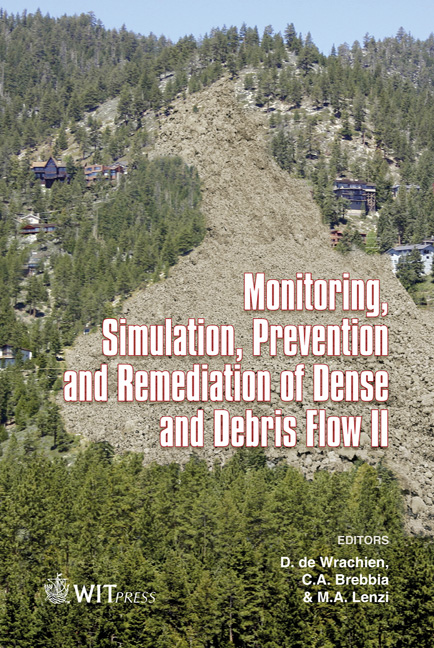A Feasibility Study On ECT Monitoring Of Phase Migration In Porous Solids
Price
Free (open access)
Transaction
Volume
60
Pages
8
Page Range
41 - 48
Published
2008
Size
644 kb
Paper DOI
10.2495/DEB080051
Copyright
WIT Press
Author(s)
S. Liu, J. Liu & Q. Chen
Abstract
In the study of the strength of soil/sand, and the cause of the incipience of debris flow, it is important to monitor the distribution and the migration of ice and water contents in such porous media. To overcome the difficulty of \“seeing” through opaque soil, an experimental investigation was conducted to explore the feasibility of non-intrusive monitoring of ice migration in porous media by using electric capacitance tomography (ECT). A ten-electrode sensor was made for signal acquisition and OIOR method was used for image reconstruction. The distribution and penetration of ice in porous solids are displayed clearly by ECT images. ECT data were also validated against the temperature data measured by thermocouples, and the feasibility of such ECT method is convincingly proven. Keywords: flow monitoring, flow in porous solids. 1 Introduction Ice penetration or melting in soil/sand (porous solids) can significantly alter the stability of the solid matrix, which will affect the possibility of debris/rock flow. Therefore, it is important to understand the relationship between ice penetration or melting in soil and the corresponding change in the mechanical properties of the soil. However, it is difficult to monitor ice and water contents and their migration in such porous media by conventional techniques, due to the limited sensing accessibility, e.g. opacity, of the solids. Electrical Capacitance Tomography (ECT) is a recently developed nonintrusive technique for visualizing the distribution of materials. As an example,
Keywords
flow monitoring, flow in porous solids.





